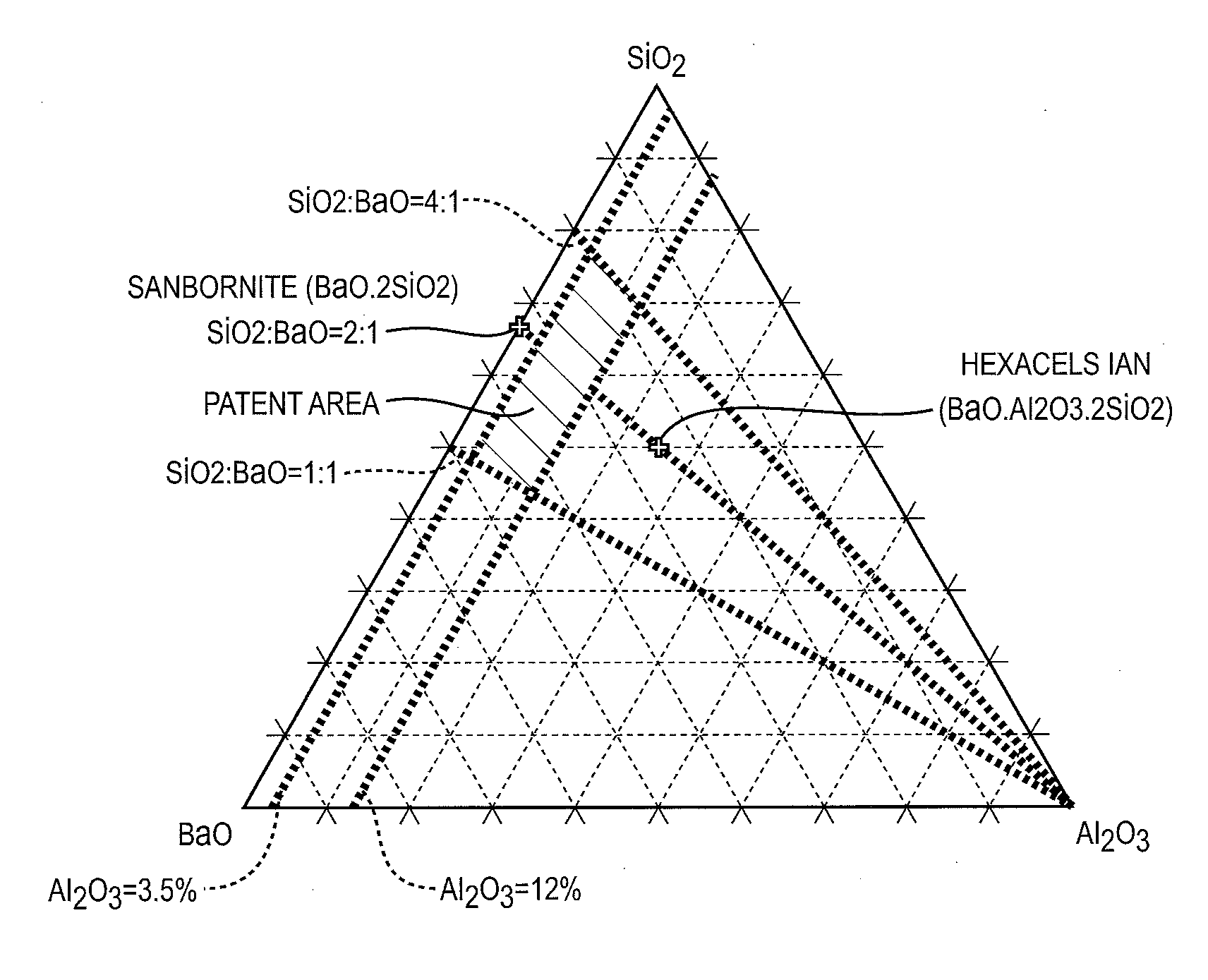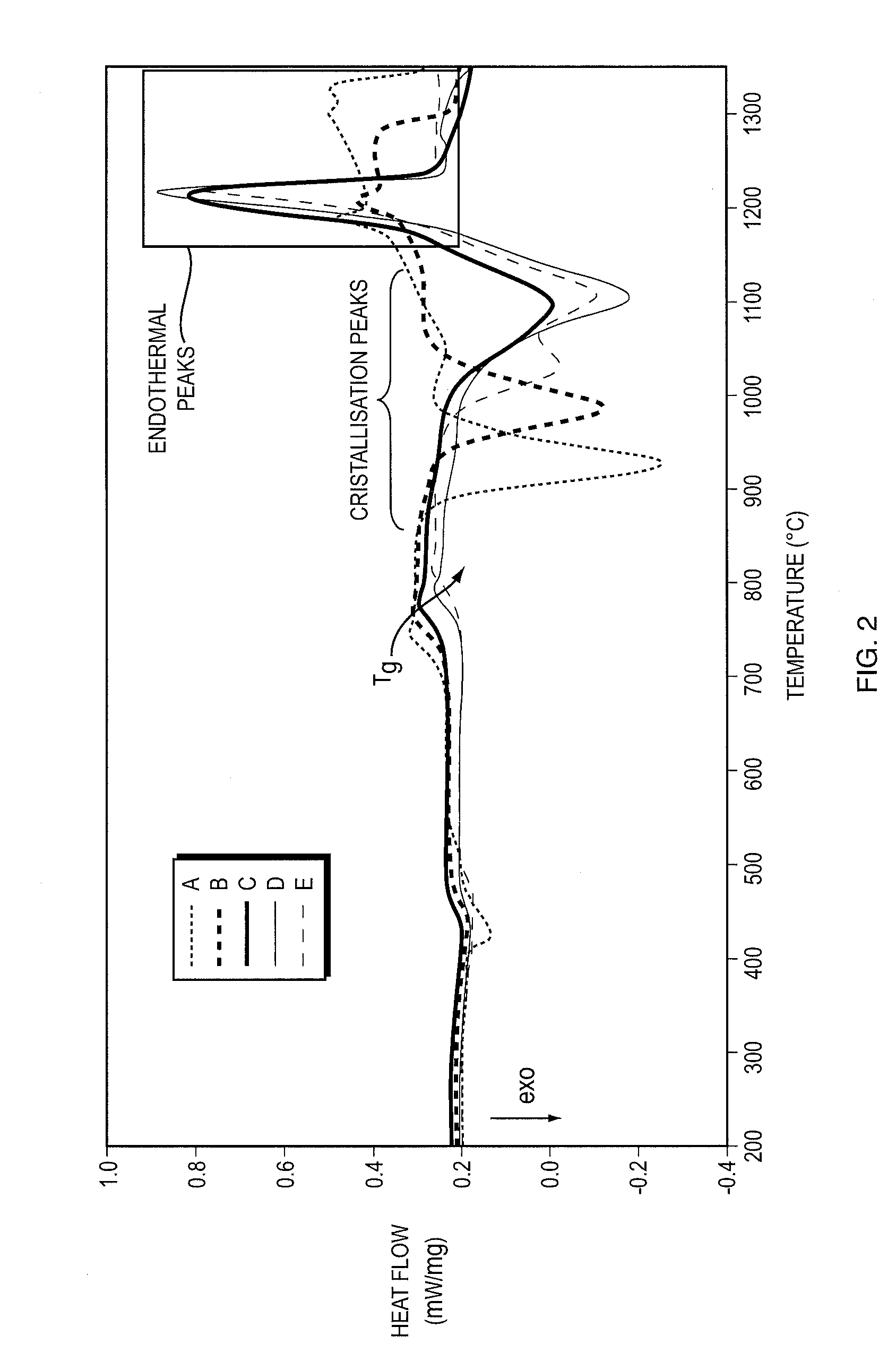Thin, fine grained and fully dense glass-ceramic seal for sofc stack
a glass-ceramic and stack technology, applied in the direction of fuel cell details, climate sustainability, final product manufacturing, etc., can solve the problems of adding extra constraints to the material, adding additions can be detrimental to the long-term stability of the seal at cell operation temperature, etc., to reduce the volatility and bubbling of the seal material
- Summary
- Abstract
- Description
- Claims
- Application Information
AI Technical Summary
Benefits of technology
Problems solved by technology
Method used
Image
Examples
Embodiment Construction
[0017]The foregoing will be apparent from the following more particular description of example embodiments of the invention, as illustrated in the accompanying drawings. The drawings are not necessarily to scale, emphasis instead being placed upon illustrating embodiments of the present invention.
[0018]Glass-ceramic materials based on mixtures of BaO, Al2O3, and SiO2 (BAS) are promising materials for SOFC sealing applications due to their high CTE and thermal stability at cell operation temperatures, particularly those obtained from glass compositions, shown in FIG. 1, lying on the Alkemade line joining the Sanbornite (BaO.2SiO2) and Hexacelsian (BaO.Al2O3.2SiO2) crystal phases, hereinafter labeled as BS2 and BAS2, respectively. Given that the CTE of BS2 and the high-temperature form of BAS2 are 13.5·10−6° C.−1 and 8.0·10−6° C.−1, respectively, a glass-ceramic mixture of the two crystal phases (and residual glass phase) can be obtained that approximately matches the average CTE of t...
PUM
| Property | Measurement | Unit |
|---|---|---|
| glass transition temperature | aaaaa | aaaaa |
| glass transition temperature | aaaaa | aaaaa |
| particle size | aaaaa | aaaaa |
Abstract
Description
Claims
Application Information
 Login to View More
Login to View More - R&D
- Intellectual Property
- Life Sciences
- Materials
- Tech Scout
- Unparalleled Data Quality
- Higher Quality Content
- 60% Fewer Hallucinations
Browse by: Latest US Patents, China's latest patents, Technical Efficacy Thesaurus, Application Domain, Technology Topic, Popular Technical Reports.
© 2025 PatSnap. All rights reserved.Legal|Privacy policy|Modern Slavery Act Transparency Statement|Sitemap|About US| Contact US: help@patsnap.com



